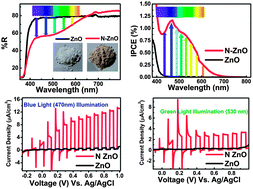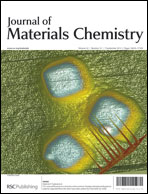Concurrent synthetic control of dopant (nitrogen) and defect complexes to realize broadband (UV–650 nm) absorption in ZnO nanorods for superior photo-electrochemical performance†
Abstract
We report a facile solution based synthesis protocol to incorporate


 Please wait while we load your content...
Please wait while we load your content...